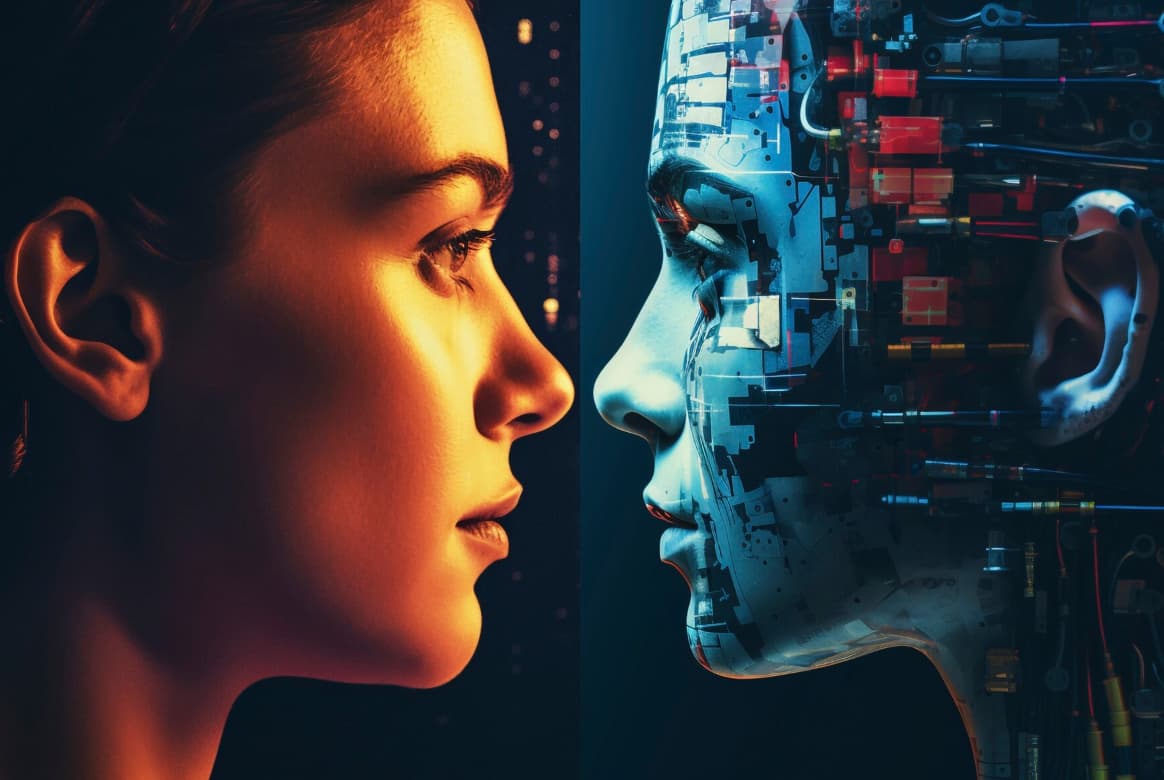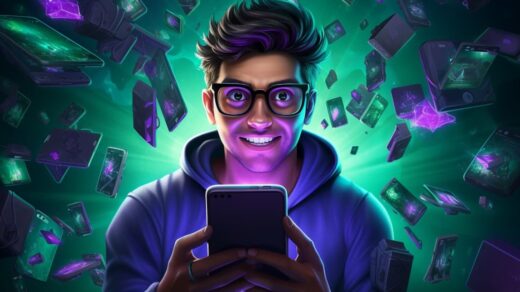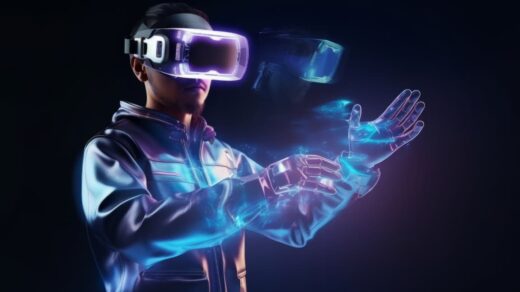Are you looking for an AI art generator like Midjourney, but don’t want to pay $10 a month? You’re in luck!
There are many other options out there, some free and some paid, that can create amazing AI-generated images.
In this article, we’ll explore the top 10 Midjourney alternatives available in 2024.
Midjourney has become very popular for its ability to create stunning images from text descriptions. But it’s not the only game in town.
Whether you’re an artist, designer, or just someone who loves to create, there’s an AI art tool out there for you.
Best Midjourney Alternatives

We’ll look at each alternative in detail, covering what makes it special, how it works, and who it’s best for.
From well-known options like DALL-E 3 to newer players like Leonardo.Ai, we’ve got you covered.
We’ll also talk about free options and paid services, so you can find something that fits your budget.
10 Best Midjourney Alternatives in 2024 (Free & Paid)
Ready to discover some amazing AI art tools? Let’s dive in and explore the best Midjourney alternatives of 2024!
1. DALL-E 3
DALL-E 3 is a powerful AI image generator created by OpenAI, the same company behind ChatGPT. It’s one of the most advanced text-to-image tools available today.
How it works:
- You type in a description of the image you want
- DALL-E 3 understands your words and creates an image to match
- It can blend different ideas, styles, and details to make unique pictures
Key features:
- Very accurate: DALL-E 3 is great at turning your words into exactly the image you imagined
- High quality: It makes images that are clear and detailed
- Understands complex ideas: You can describe complicated scenes, and DALL-E 3 will create them
- Improves on previous versions: It’s 4 times better than DALL-E 2 at making high-resolution images
Who it’s for:
- Artists looking for inspiration
- Designers who need quick visual concepts
- Anyone who wants to turn their ideas into images quickly
How to use it:
- DALL-E 3 is part of ChatGPT Plus, which costs money to use
- You type your image description into ChatGPT, and it creates the image for you
Pros and Cons:
| Pros | Cons |
|---|---|
| Very accurate at creating images from descriptions | Requires a paid ChatGPT Plus subscription |
| Can make highly detailed and realistic images | Not available as a standalone tool |
| Understands complex prompts well | |
| Creates high-resolution images |
Platform: Web (through ChatGPT)
DALL-E 3 is a top choice if you want AI-generated images that closely match your descriptions. It’s especially good for realistic images and complex scenes.
However, you’ll need to pay for ChatGPT Plus to use it, which might not be ideal if you only want to make images.
2. Stable Diffusion XL and SDXL Turbo
Stable Diffusion is a free, open-source AI image generator that’s become very popular. It’s different from Midjourney because anyone can use it for free, and even run it on their computer if they have the right hardware.
How it works:
- You enter a text description of the image you want
- Stable Diffusion uses AI to create an image based on your words
- It offers different versions: Stable Diffusion XL for high-quality images, and SDXL Turbo for faster results
Key features:
- Free to use: You don’t have to pay to create images
- Open-source: Developers can modify and improve it
- Can run locally: If you have a good computer, you can use it without the internet
- Fast image generation: Especially with SDXL Turbo
- Community support: Lots of people use it, so there’s help available
Who it’s for:
- Hobbyists who want to try AI art without paying
- Developers interested in AI image generation
- Artists looking for a customizable tool
How to use it:
- You can use Stable Diffusion through various websites or apps
- Advanced users can install it on their computers
Pros and Cons:
| Pros | Cons |
|---|---|
| Free and open-source | Can be complex to set up for local use |
| Powerful image generation capabilities | Image quality is not always as good as paid options |
| Can be run on a local computer | May struggle with details like hands and eyes |
| Large community for support and resources |
Platform: Web, Local installation
Stable Diffusion is a great choice if you want a free, powerful AI image generator. It’s especially good for those who like to tinker or want to understand how AI artworks.
However, it might take some learning to use effectively, and the images aren’t always perfect, especially when it comes to human features.
3. Adobe Firefly
Adobe Firefly is a new AI tool from Adobe, a company known for Photoshop and other creative software.
It’s designed to work alongside Adobe’s other tools and offers various AI-powered features for creating and editing images.
How it works:
- You describe the image you want in plain language
- Firefly creates multiple versions of the image for you to choose from
- You can further edit the image using Adobe’s tools
Key features:
- Text-to-image generation: Create images from text descriptions
- Image editing tools: Change colors, add effects, and more
- Integration with Adobe products: Works well with other Adobe software
- Multiple AI tools: Includes features like text effects and image expansion
Who it’s for:
- Designers who already use Adobe products
- Creative professionals looking for AI-assisted workflows
- Anyone interested in easy-to-use AI art tools
How to use it:
- Currently free to try (may change in the future)
- Access through Adobe’s website
- Choose from various AI tools for different tasks
Pros and Cons:
| Pros | Cons |
|---|---|
| Created by a trusted name in design software | Still in development, and some features are not ready |
| Integrates well with other Adobe tools | May not be as advanced as some competitors for certain tasks |
| Offers multiple AI creative tools | Free access may be limited in the future |
| User-friendly interface |
Platform: Web
Adobe Firefly is a promising tool, especially for those already in the Adobe ecosystem. It’s not as specialized as some other AI art generators, but it offers a wide range of features that could be very useful for designers and artists.
The fact that it’s currently free to try makes it worth checking out, though this may change in the future.
4. Bing Image Creator
Bing Image Creator is Microsoft’s entry into the AI image generation field. It’s integrated into Bing Chat and uses technology from DALL-E to create images based on text descriptions.
How it works:
- Type your image description into Bing Chat in “Creative” mode
- The AI generates images based on your description
- You can view and download the created images
Key features:
- Free to use: No cost to generate images
- Integrated with search: Use it right from Bing’s search interface
- Powered by DALL-E: Uses advanced AI technology
- Multiple images: Creates several versions of your request
Who it’s for:
- Casual users who want to try AI image generation
- People who need quick, free image creation
- Bing users who want an all-in-one search and create experience
How to use it:
- Go to Bing Chat and switch to “Creative” mode
- Type in your image description
- Wait for the AI to generate your images
Pros and Cons:
| Pros | Cons |
|---|---|
| Completely free to use | Image quality may not match paid services |
| No account required | Limited customization options |
| Integrated with Bing search | May have daily usage limits |
| Powered by advanced DALL-E technology | Not as specialized as dedicated image generation tools |
Platform: Web, Mobile (Android, iOS)
Bing Image Creator is a great option if you want to try AI image generation without any cost or commitment. It’s easy to use and accessible to anyone with a web browser.
However, the image quality and customization options might not be as advanced as some paid alternatives. It’s best for quick, simple image creation tasks.
5. Leonardo.Ai
Leonardo.Ai is a newer player in the AI image generation field, but it’s quickly gaining attention. It’s designed with a focus on creating assets for games and other digital media.
How it works:
- Enter a text prompt describing the image you want
- Choose from various models and styles
- Leonardo.Ai generates images based on your input
Key features:
- Specialized in-game assets: Great for creating characters, environments, and items
- Multiple AI models: Choose different styles and approaches
- Custom training: You can train the AI on your style
- High-quality outputs: Known for detailed, high-resolution images
Who it’s for:
- Game developers and designers
- Digital artists creating fantasy or sci-fi art
- Anyone interested in creating unique characters or environments
How to use it:
- Sign up for an account (free tier available)
- Enter your text prompt and choose your settings
- Generate and download your images
Pros and Cons:
| Pros | Cons |
|---|---|
| Excellent for game-related art | The free tier has limitations |
| Can create detailed characters and scenes | Paid plans can be expensive for heavy use |
| Allows custom AI model training | The learning curve for advanced features |
| Good at generating human faces |
Platform: Web
Leonardo.Ai stands out for its focus on game-related art and assets. If you’re working on a game or creating fantasy/sci-fi art, it’s worth trying.
The ability to train custom models is a big plus for artists wanting to develop a consistent style. However, the free tier is limited, and it might be overkill if you’re just looking for simple image generation.
6. Blue Willow by LimeWire
Blue Willow, now owned by LimeWire, is a relatively new AI image generator that’s gained popularity quickly. It offers a simple interface for creating various types of images.
How it works:
- Type in your image description
- Choose any additional style options
- Blue Willow generates images based on your input
Key features:
- User-friendly interface: Easy for beginners to use
- Quick generation: Creates images fast
- Various styles: Good for logos, characters, landscapes, and more
- Free tier available: Try it out without paying
Who it’s for:
- Beginners in AI art generation
- People looking for a simple, fast image creator
- Artists and designers need quick concept art
How to use it:
- Go to the Blue Willow website
- Enter your image description
- Generate and download your images
Pros and Cons:
| Pros | Cons |
|---|---|
| Free to use (limited) | Not as advanced as some competitors |
| Very fast image generation | Limited customization options |
| Good for various art styles | The free tier has restrictions |
| No need to join a Discord server | Image quality can be inconsistent |
Platform: Web, Mobile (Android, iOS)
Blue Willow is a good choice if you want a simple, fast AI image generator. It’s especially useful for quick concept art or trying out ideas.
The speed of generation is a big plus, and the variety of styles it can create is impressive. However, for more detailed or specific work, you might find it lacking compared to more advanced tools.
7. Fotor AI Image Generator
Fotor, known for its online photo editing tools, has added an AI image generator to its suite of services. This tool combines Fotor’s editing capabilities with AI-powered image creation.
How it works:
- Enter your text prompt for the image
- Choose from various styles and options
- Fotor generates images based on your input
- Edit the generated images using Fotor’s tools
Key features:
- Integrated editing tools: Edit AI-generated images right after creation
- Multiple styles: Choose from photography, conceptual art, anime, and more
- Image-to-image generation: Use existing images as a base for AI creation
- User-friendly interface: Easy to use for beginners
Who it’s for:
- People who want to create and edit images in one place
- Designers looking for a mix of AI generation and traditional editing
- Beginners who want an all-in-one image creation tool
How to use it:
- Go to the Fotor website
- Choose the AI Image Generator tool
- Enter your prompt and settings
- Generate and edit your image
Pros and Cons:
| Pros | Cons |
|---|---|
| Combines AI generation with photo editing | Limited free credits |
| Good for conceptual art | Paid plan required for full access |
| User-friendly interface | Not as specialized as some AI-only tools |
| Multiple style options | Image quality can vary |
Platform: Web, Mobile (Android)
Fotor’s AI Image Generator is a good choice if you want to both create and edit AI images in one place. It’s especially useful for those already familiar with Fotor’s editing tools.
The variety of styles and the ability to do image-to-image generation are nice features. However, the limited free credits mean you’ll need to pay for regular use, and the image quality might not match more specialized AI tools.
8. NightCafe
NightCafe is a versatile AI art creation platform that offers access to multiple AI models, including Stable Diffusion and DALL-E 2. It’s known for its wide range of style options and artistic outputs.
How it works:
- Choose an AI model (Stable Diffusion, DALL-E 2, etc.)
- Enter your text prompt and choose style options
- NightCafe generates images based on your input
Key features:
- Multiple AI models: Access different AI technologies in one place
- Style transfer: Apply famous art styles to your images
- Community features: Share and view other users’ creations
- Evolution feature: Iterate and improve on generated images
Who it’s for:
- Artists looking to experiment with different AI styles
- People interested in creating artistic AI images
- Users who want to try multiple AI models without switching platforms
How to use it:
- Sign up for a NightCafe account
- Choose your AI model and enter your prompt
- Generate and share your images
Pros and Cons:
| Pros | Cons |
|---|---|
| Access to multiple AI models | Limited free credits |
| Great for artistic and stylized images | Can be expensive for heavy use |
| Active community for inspiration | The learning curve for advanced features |
| Unique evolution feature for refining images | Image quality can vary depending on the model used |
Platform: Web
NightCafe is an excellent choice for those who want to explore different AI art styles and models. Its strength lies in creating artistic and stylized images, rather than photorealistic ones. The community features can be inspiring, and the evolution tool is great for refining your creations. However, the credit system means you’ll need to pay for regular use, and it might take some experimentation to get the results you want.
9. Lexica
Lexica is both an AI image generator and a search engine for AI-generated images. It uses a fine-tuned version of Stable Diffusion, offering its unique take on AI art creation.
How it works:
- Enter your text prompt for the image you want
- Choose from Lexica’s AI models (like Aperture v3.5)
- Generate images based on your description
Key features:
- Image search: Find AI-generated images for inspiration
- Custom AI model: Lexica’s version of Stable Diffusion
- High-quality outputs: Known for detailed image generation
- Multiple aspect ratios: Choose different image sizes
Who it’s for:
- Artists looking for AI image inspiration
- Users who want a Stable Diffusion-based tool with some unique features
- People interested in exploring a large database of AI art
How to use it:
- Go to the Lexica website
- Enter your prompt and choose your settings
- Generate your images or search existing ones
Pros and Cons:
| Pros | Cons |
|---|---|
| Free tier with 100 images per month | Paid tier is required for more generations |
| High-quality image outputs | Can be slower than some other tools |
| Useful image search feature | Limited customization options compared to some competitors |
| Based on the popular Stable Diffusion | Interface can be simple compared to more advanced tools |
Platform: Web
Lexica is a good choice if you want a straightforward AI image generator with the bonus of an AI art search engine. Its image quality is generally high, especially for portraits. The free tier is generous compared to some other services. However, it might not offer as many advanced features as some competitors, and the generation speed can be slower.
10. Playground AI
Playground AI is a user-friendly platform that offers access to multiple AI models, including its own Playground v2 and versions of Stable Diffusion.
How it works:
- Choose an AI model (Playground v2, Stable Diffusion XL, etc.)
- Enter your text prompt for the image you want
- Generate images based on your description
Key features:
- Multiple AI models: Access different technologies in one place
- Generous free tier: Create up to 500 images per day for free
- Quick generation: Images are created fast
- User-friendly interface: Easy for beginners to use
Who it’s for:
- Beginners who want to try AI art generation
- Users who need to create many images quickly
- People who want to experiment with different AI models
How to use it:
- Go to the Playground AI website
- Choose your AI model and enter your prompt
- Generate and download your images
Pros and Cons:
| Pros | Cons |
|---|---|
| The very generous free tier | Limited image size options for free users |
| Access to multiple AI models | Can only generate one image at a time on the free plan |
| Fast image generation | Some features are restricted to paid users |
| Easy-to-use interface | Image quality may vary depending on the model used |
Platform: Web
Playground AI is an excellent choice for those who want to create a lot of AI-generated images without paying. The 500 free images per day is more than most people will need. It’s also great for trying out different AI models to see which you prefer. However, the limitations on image size and the ability to generate only one image at a time on the free plan might be frustrating for some users. For more serious or professional use, you might need to consider the paid plan.
FAQs:
- Q: Are these Midjourney alternatives safe to use?
A: Yes, all the alternatives listed are reputable services. However, always be cautious about what personal information you share and read the terms of service for each platform.
- Q: Can AI-generated images be used commercially?
A: This depends on the specific service and its terms. Some allow commercial use, while others are for personal use only. Always check the licensing terms before using AI-generated images commercially.
- Q: Do I need a powerful computer to use these AI image generators?
A: Most of these services run in the cloud, so you don’t need a powerful computer. However, for tools like Stable Diffusion that can be run locally, a good GPU can be helpful.
- Q: How do these compare to Midjourney in terms of image quality?
A: Image quality can vary. Some, like DALL-E 3, can produce images comparable to Midjourney. Others might not be quite as refined but offer different strengths.
- Q: Can these AI tools replace human artists?
A: While AI tools are powerful, they’re best seen as tools to assist and inspire human creativity rather than replacements for human artists. They each have unique strengths and limitations.
Also Check:
Conclusion:
As we’ve seen, there are many great alternatives to Midjourney available in 2024.
Each of these AI image generators has its strengths and is suited to different needs:
- DALL-E 3 is best for those who want highly accurate and detailed images, and don’t mind paying for a ChatGPT Plus subscription.
- Stable Diffusion is ideal for those who want a free, open-source option and don’t mind a bit of a learning curve.
- Adobe Firefly is great for designers already in the Adobe ecosystem and those who want AI tools integrated with professional design software.
- Bing Image Creator is perfect for casual users who want a completely free and easy-to-use option.
- Leonardo.Ai shines for game developers and those creating fantasy or sci-fi art.
- Blue Willow is good for beginners who want a simple, fast image generator.
- Fotor AI Image Generator is best for those who want to both create and edit AI images in one place.
- NightCafe is ideal for artists who want to experiment with different AI styles and models.
- Lexica is great for those who want a Stable Diffusion-based tool with a useful image search feature.
- Playground AI is perfect for users who need to create many images quickly and want to try different AI models.
When choosing an AI image generator, consider factors like:
- Cost: Do you need a free option, or are you willing to pay for more features?
- Ease of use: Are you comfortable with complex tools, or do you need something simple?
- Image quality: How important is photorealism vs. artistic style?
- Speed: Do you need to generate images quickly?
- Customization: How much control do you want over the image creation process?
Remember, the best tool for you depends on your specific needs and goals. Don’t be afraid to try out a few different options to see which one works best for your projects.
As AI technology continues to advance, we can expect these tools to become even more powerful and user-friendly.
Whether you’re an artist, designer, developer, or just someone who loves to create, there’s never been a better time to explore the world of AI-generated images.








